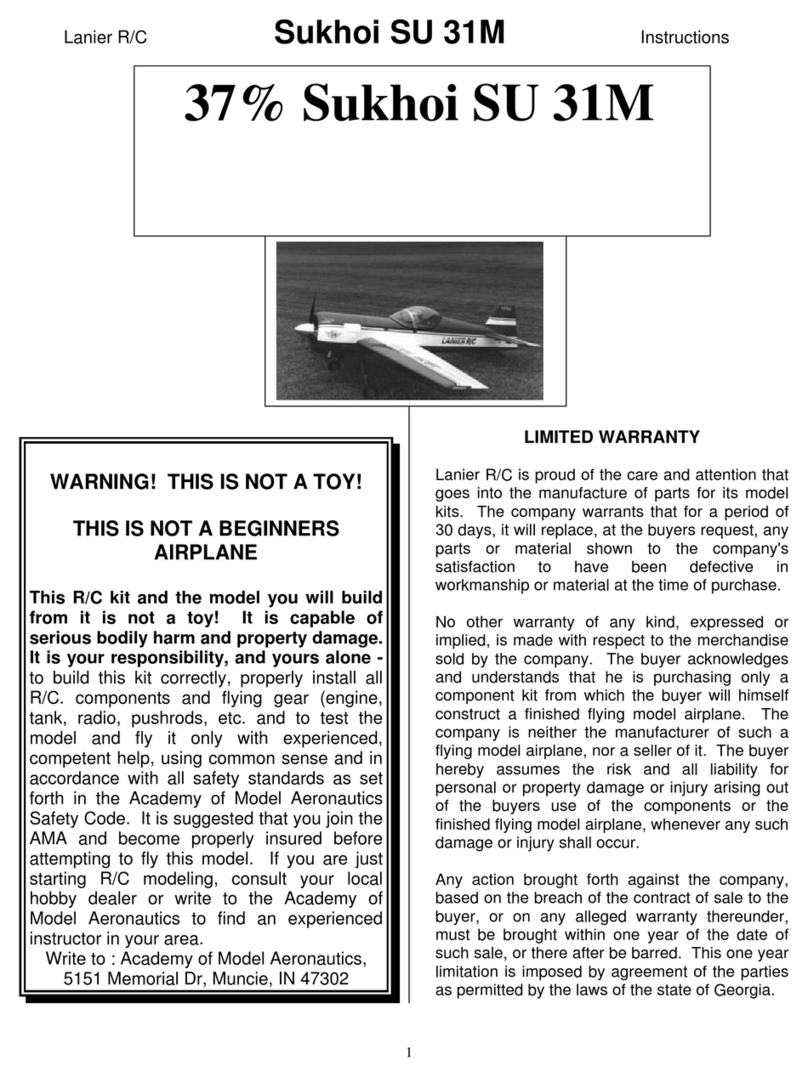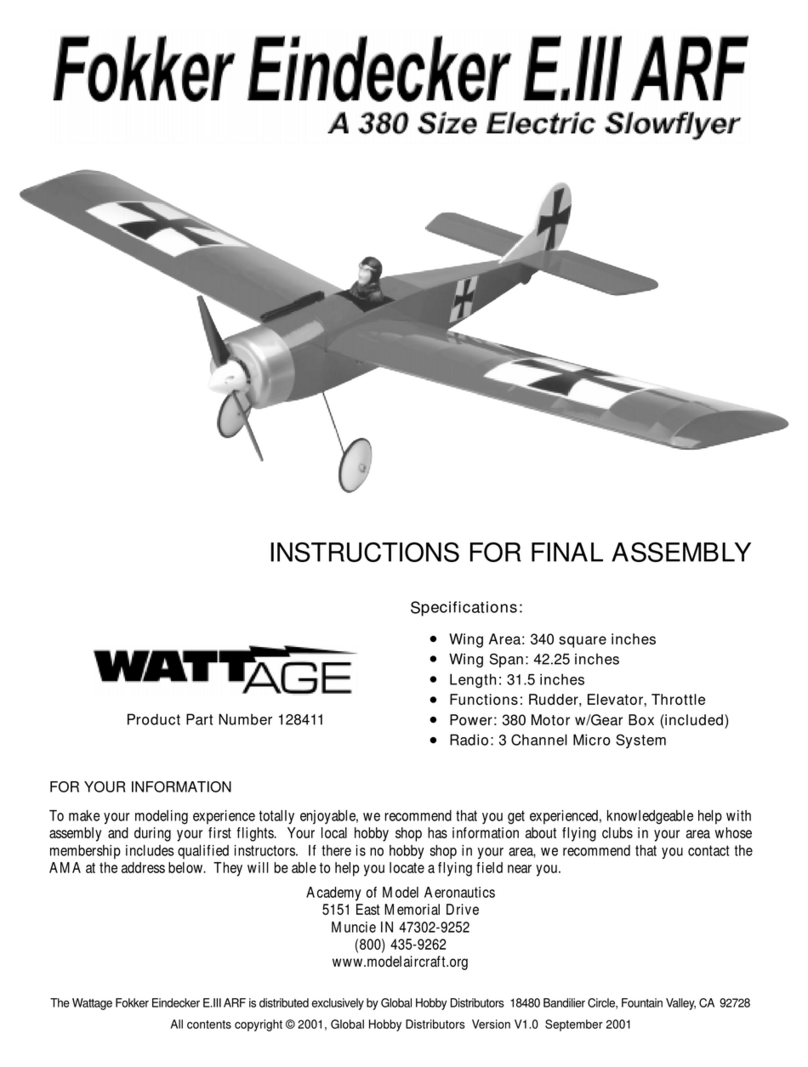
8
The covering material used on the Thermalaire EP is
a heat shrink polyester material. Because of this, it is
possible with heat and humidity changes that the cov-
ering on your airplane may wrinkle or sag. This trait
is inherent in all types of heat shrink material. To
removethe wrinklesyouwill needto purchase,or bor-
row from a fellow modeler, a heat iron. If you need to
purchase one, the Global Sealing Iron # 360900 is
recommended.
Follow these simple steps to remove the wrinkles:
❑1) Plug in and turn on the sealing iron to the
medium temperature setting. Allow the iron to heat
up for approximately 5 - 7 minutes.
❑2) After the iron has reached temperature,
lightly apply the iron to the wrinkled section of
the covering. Move the iron slowly over the
wrinkled section until the covering tightens and the
wrinkles disappear. You will notice that the color
of the covering will darken when it is heated. When
the covering cools back down, it will return to its
normal color.
☛If the color layer smears from any of the seams
the temperature of the iron is too hot. Turn the tem-
perature dial down and wait about 5 minutes for the
iron to adjust to the lower temperature. You can re-
move any excess color streaks using a paper towel
soaked with a small quantity of Acetone.
A NOTE ABOUT COVERING
❑8) Set the motor between the handles of a pair
of needle nose pliers and secure the motor to the
handles using three rubber bands. This will keep
the motor secure enough for the break-in procedure.
See photo # 1 below.
❑9) Turn on the transmitter and plug the flight
battery into the speed control. If the motor turns on
immediately, use the throttle lever on the back of the
transmitter (Focus 3 only) to turn off the motor.
❑10) With the motor turned off, test the opera-
tionof thetwo servos.Both servosshould movewhen
you move the control stick.
❑11) Carefully spray a couple of light sprays of
Performance Plus Motor Spray inside the motor
openings and apply a small drop of Trinity Break-
In Drops onto each of the two motor bushings. See
photo # 2 below.
Photo # 1
Photo # 2
❑12) Using a couple of paper towels, wipe off
the excess motor spray and oil.
❑13) Slowly turn on the motor using the trans-
mitter throttle lever (Focus 3 only). Position the
throttle lever to about 1/3 throttle and let the motor
run. While the motor is running, apply a light spray
of motor spray inside the motor openings once every
minute, followed by a small drop of Break-In Drops
on each of the bushings. Do this until the battery is
fully discharged (i.e., the motor stops).
☛If you have chosen to usean on-off only motor
controller, complete the same process but only run
the motor in two-minute intervals, letting the motor
cool between each.
❑14) After the battery has discharged and the mo-
tor has stopped, spray motor spray through the motor
openings until the fluid runs clear. Apply a couple of
drops of Break-In Drops to the bushings and wipe
away all of the excess using paper towels.
❑15) Reinstall the motor, propeller assembly and
canopy. Reverse the removal steps for installation.





























